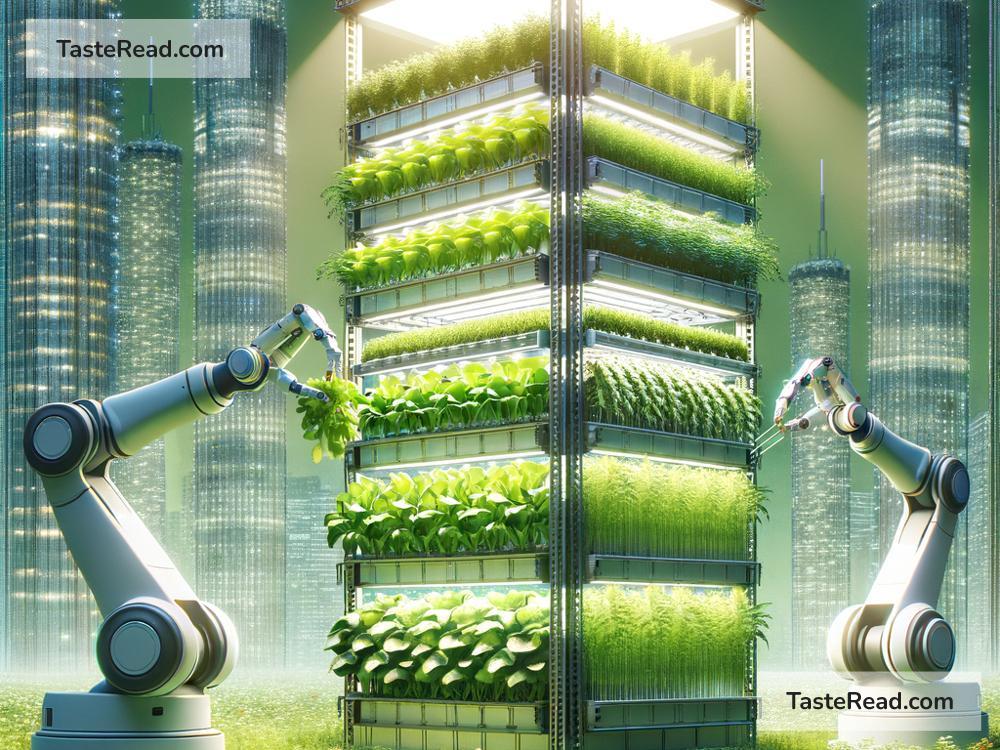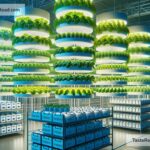The Future of Food and Ecological Balance
Food is one of the most important aspects of life. It keeps us healthy, gives us energy, and connects people across cultures. But as the world grows, with a population expected to reach almost 10 billion by 2050, we face a big question: How will we feed everyone while protecting the planet? Future food systems must balance the need for food with the need to care for the Earth’s ecosystems.
Let’s take a closer look at the challenges we face, the amazing solutions already being developed, and how we can move toward a better future for both humanity and the planet.
Challenges to Food and Ecological Balance
Today, the way we grow, process, and consume food is putting pressure on the planet. Agriculture uses up about 70% of the world’s freshwater and contributes roughly 25% of global greenhouse gas emissions. Clearing forests for farmland destroys wildlife habitats, leading to reduced biodiversity (the variety of animals and plants in nature). Industrial farming also depletes soil health, making it harder for future generations to grow food.
Meanwhile, as the climate changes, crops are harder to grow in some regions. Droughts, floods, and increasing global temperatures reduce harvests. At the same time, one-third of all food produced globally is wasted, putting unnecessary strain on resources.
If we don’t make changes, the food industry will continue harming the planet, and ecosystems will struggle to survive. But there’s hope. People around the world are working on innovative solutions to create a food system that works for both humanity and nature.
Innovative Solutions for Sustainable Food
The future of food lies in creativity, technology, and smarter choices. Here are some exciting ways we can balance food production with ecological health:
1. Plant-Based Eating
Many people are choosing to eat more plants and less meat. Why? Because growing vegetables, fruits, grains, and legumes has a much smaller impact on the environment compared to raising animals. Producing beef, for example, requires lots of land, water, and feed, and cows release methane—a powerful greenhouse gas. By shifting to plant-based diets, we use fewer resources and reduce emissions.
To make plant-based eating even easier, companies are developing plant-based meats and dairy products that taste just like the real thing. Choices like almond milk, veggie burgers, and tofu are already popular, and new innovations are constantly improving their flavors and textures.
2. Vertical Farming
Imagine growing food inside skyscrapers instead of traditional farmland. That’s the idea behind vertical farming—a method of growing crops indoors using stacked layers. Vertical farms use hydroponics (growing plants in water) and LED lights to replace soil and sunlight.
Vertical farming has huge potential. It uses 90% less water than traditional farming and doesn’t require pesticides. Plus, since vertical farms can be placed right in cities, food can be grown close to where people live, reducing transportation emissions. Companies around the world, like AeroFarms and Plenty, are leading the way in this exciting field.
3. Lab-Grown Meat
Another futuristic solution is lab-grown meat, also called cultivated meat. It’s made by taking animal cells and growing them in a lab to create real meat—no need to raise or slaughter animals. Producing lab-grown meat uses fewer resources and generates fewer emissions than traditional livestock farming.
The first lab-grown burger was created in 2013, and since then, the industry has advanced quickly. Today, companies like GOOD Meat and Upside Foods are working to make lab-grown meat affordable and widely available. Who knows? In a few years, it might be a common option at your local grocery store or restaurant!
4. Reducing Food Waste
One of the simplest ways to protect the environment is to stop wasting food. Around the world, people throw away about 1.3 billion tons of food every year. This wasted food could feed billions of people and also save precious resources.
Countries and businesses are stepping up to tackle food waste. Apps like Too Good To Go allow consumers to buy leftover food from restaurants at discounted prices. Farmers are finding ways to use “ugly” produce (fruits and vegetables that look strange but are still perfectly edible). As awareness grows, more people are learning to store food better, plan smartly, and eat responsibly.
What You Can Do
You don’t have to invent new technologies to help balance food and ecology—you can start making a difference today! Here are some simple steps:
- Try Plant-Based Meals: Even choosing one or two plant-based meals a week can reduce your environmental impact.
- Support Sustainable Brands: Look for products from companies that care about the planet.
- Stop Food Waste: Plan your meals ahead, save leftovers, and buy only what you need.
- Learn and Share: Spread the word about the future of food and encourage others to make eco-friendly choices.
A Hopeful Future
The future of food is full of opportunities. By combining sustainable practices with cutting-edge technology, we can produce enough for everyone while protecting the planet’s natural balance. Food doesn’t have to harm ecosystems—it can strengthen them. When we work together, both humans and nature can thrive.
The choices we make today will shape the food systems of tomorrow. By thinking creatively and acting responsibly, we can ensure a future where no one goes hungry, and the Earth remains healthy and beautiful for generations to come. The journey to sustainable food starts now, and everyone has a role to play.
What steps will you take to support the future of food and ecological balance? Let’s make this vision a reality—one bite at a time!


